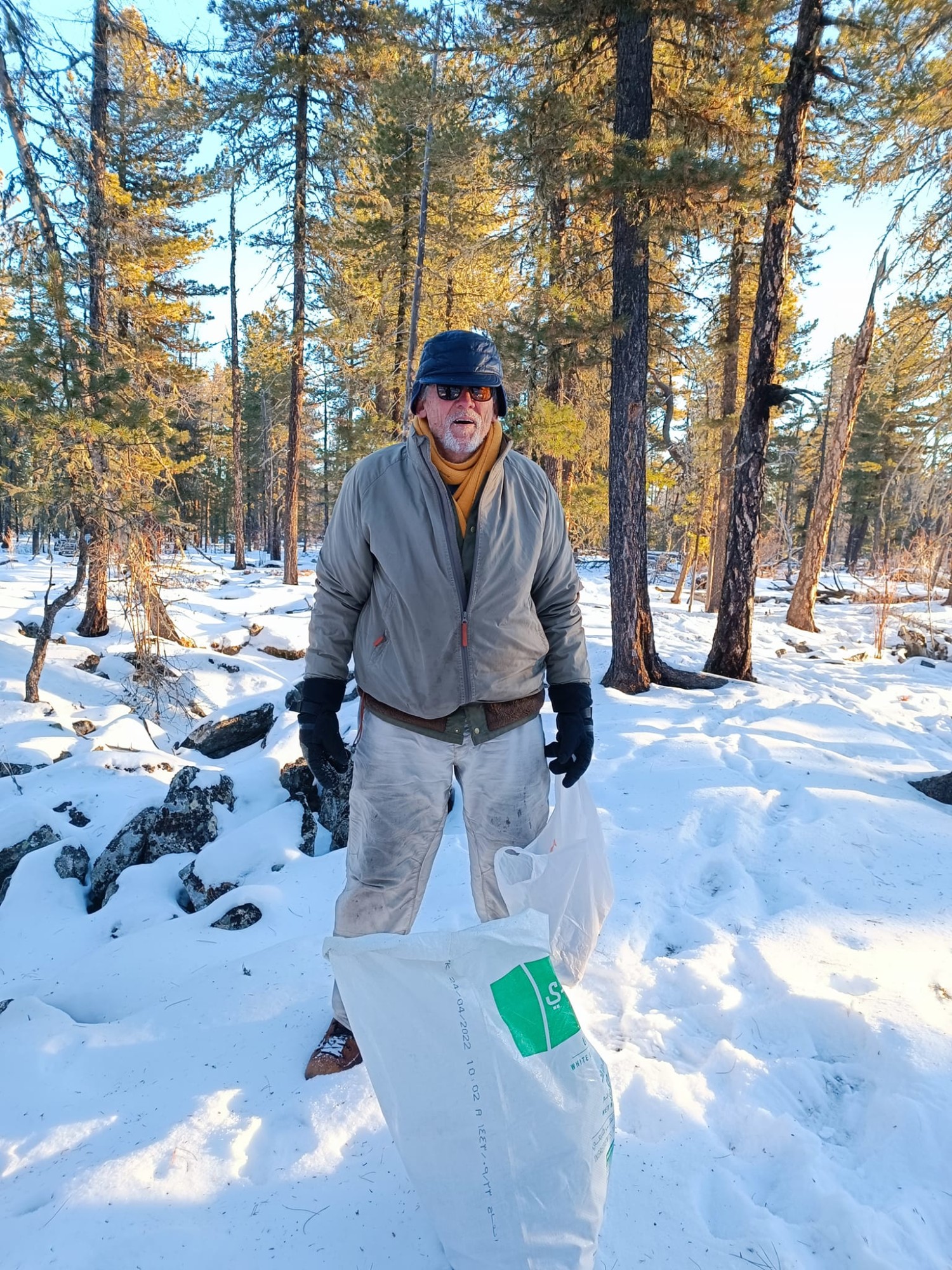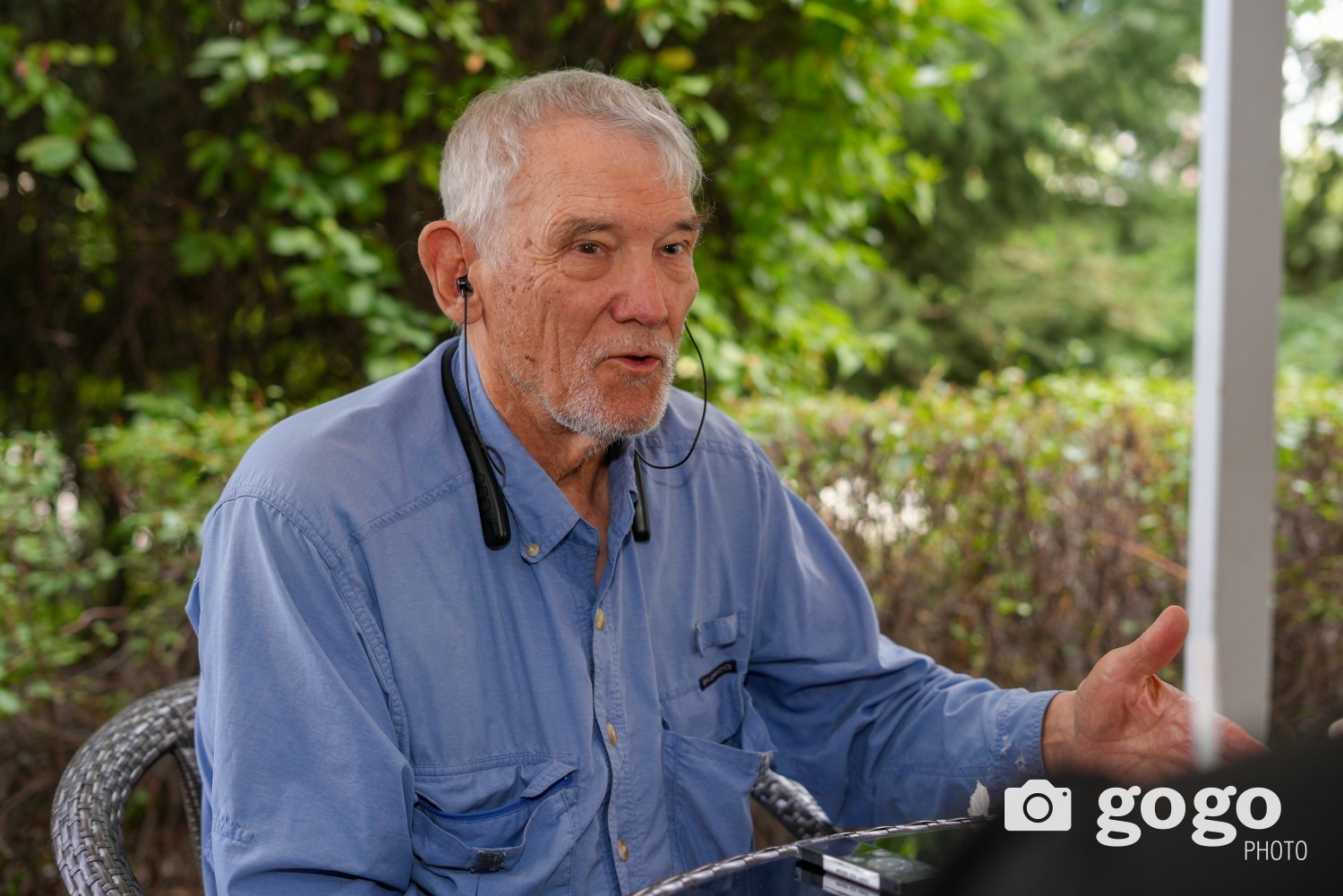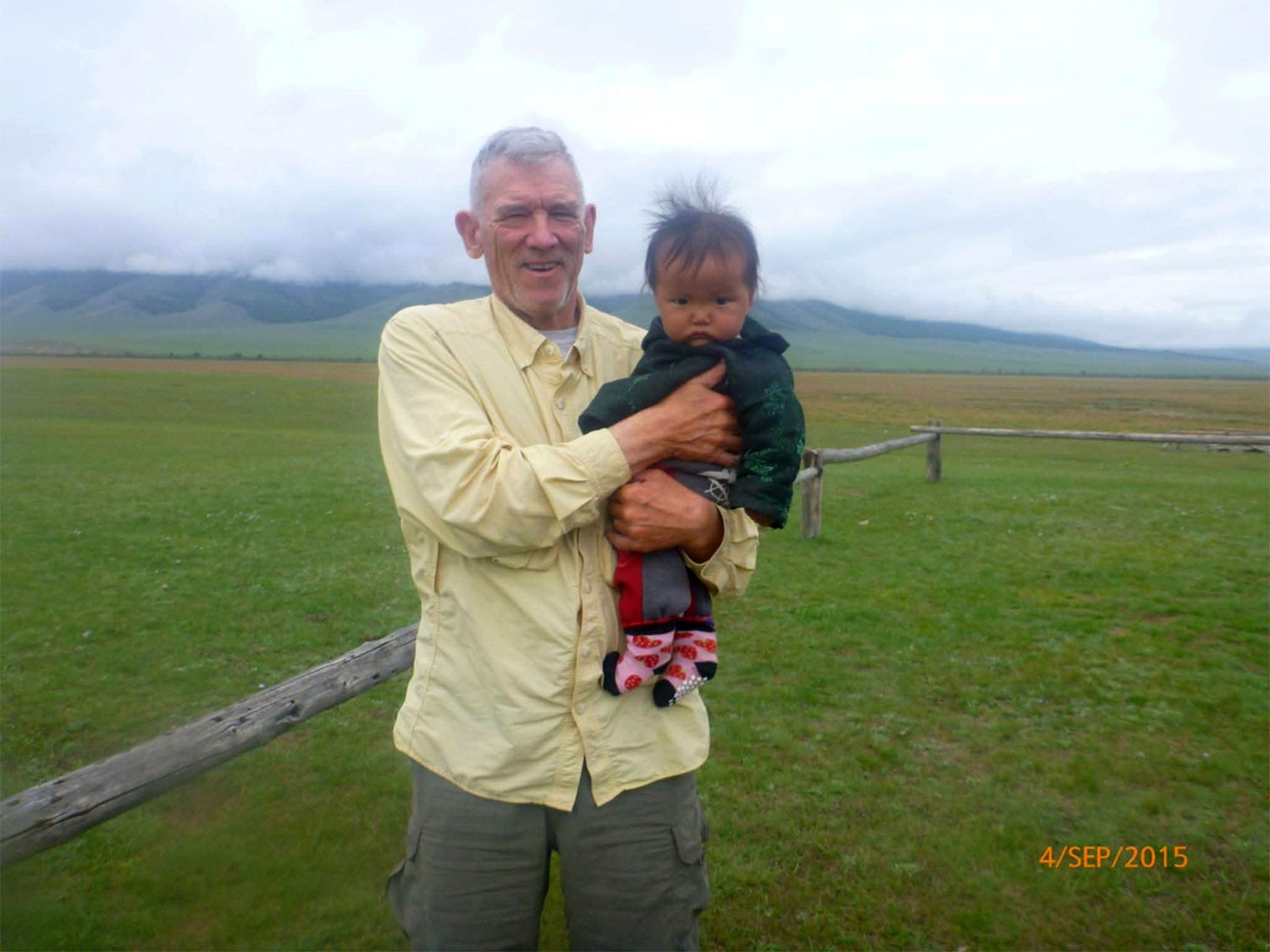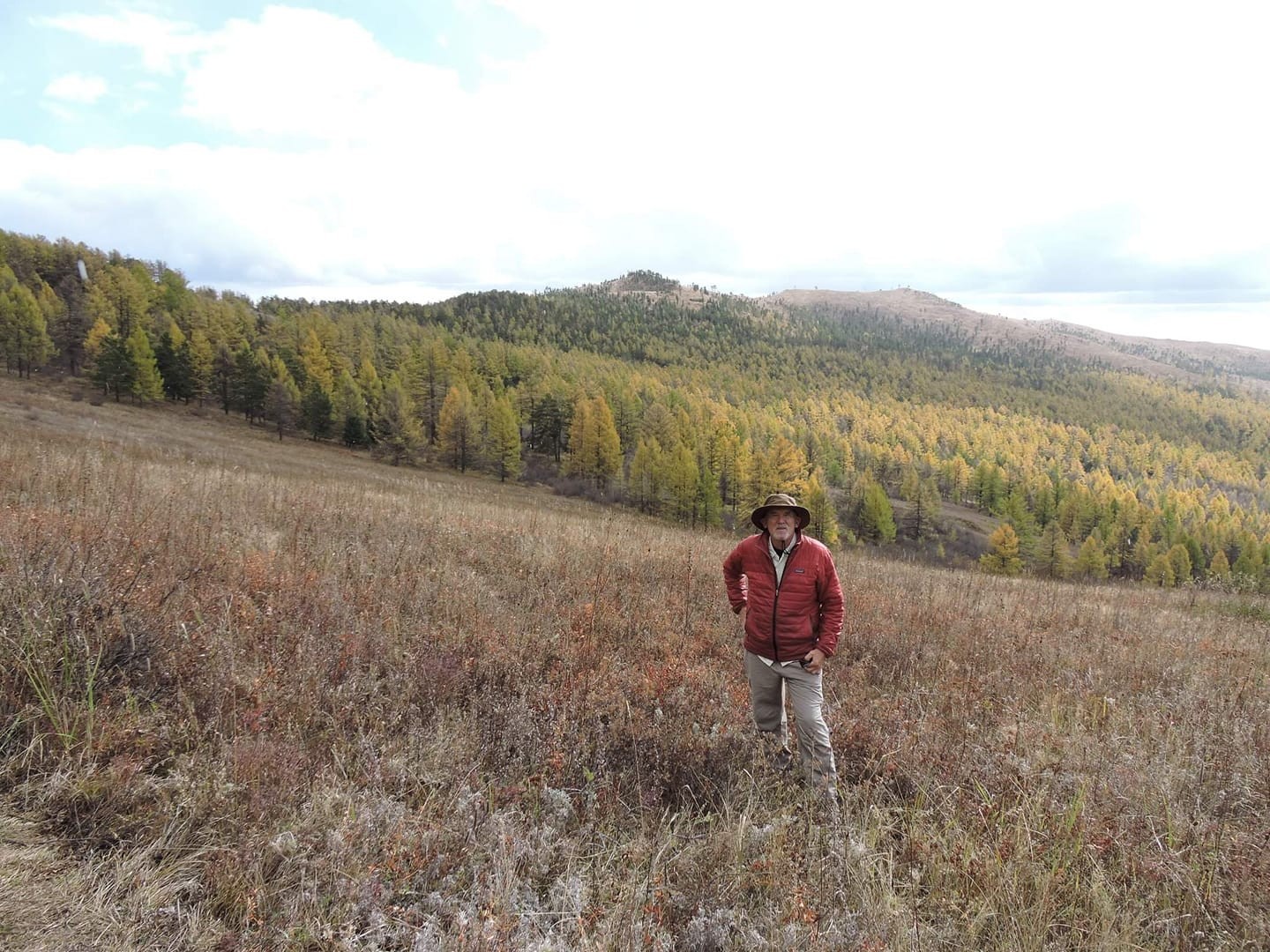For the 'Mongolia through Foreign Eyes' column, we invited Mr. John Stampfl as our guest. He first came to Mongolia on a work assignment in 1998, and since 2001 he has been living permanently in Murun, Khuvsgul Province.
Please introduce yourself. Where are you from and how long have you been in Mongolia?
My name is John Stampfl. I was born in San Francisco, though I grew up in nearby towns within about 100 kilometers. I first came to Mongolia in 1998 when my uncle came here for a UN project. I joined him, met some people, and liked it so much that I started coming back. Eventually, I moved here in 2001.
From 2001 I lived in Mongolia continuously until two years before COVID. I had to leave to undergo an eye operation in Saipan, a U.S. Island, where I had cataract surgery. Afterwards, I tried to renew my work visa but got stuck abroad when Mongolia closed its borders during the pandemic. I stayed in the U.S. until I got vaccinated, then traveled around the U.S. and Eastern Europe before returning once the borders reopened.
In Ulaanbaatar, I lived in Sansar, Khan-Uul District, and near the old circus. Later, I moved to Murun, Khuvsgul, and for a time lived in Erdenebulgan. I’ve spent about five years in Murun altogether, including three years before COVID and a year and a half after. I know Murun well, though I’m more familiar with old UB than the newly built areas.
And what is your profession?
My original profession was systems engineering—essentially computer engineering. Now I work on forest conservation, particularly on issues related to global warming. With warmer winters, insects survive longer, killing more trees. On top of that, livestock such as sheep, goats, and cows eat young saplings, which prevents regeneration.
 So, are you working in that field in Murun?
So, are you working in that field in Murun?
Yes. I volunteer for a friend’s logging company, researching how global warming impacts forests. This problem isn’t unique to Mongolia—it’s happening worldwide, including in the U.S. Insects thrive in warmer climates, causing increasing damage. Normally, colder winters would kill off more insects, but as winters get milder, this becomes a bigger issue.
What was your first impression when you came to Mongolia?
That was back in 1998. We stayed at the Grand Chinggis Hotel, which even had a nightclub shaped like a ger on the top floor. There was almost no traffic then, since very few people owned cars.
When I moved here in 2001, I studied Mongolian at the National University and taught English there. Later, I joined Peace Corps speaking clubs in Murun and helped students practice English. Some of them went on to study in Europe, and I’m still in touch with them today.
Do you know much Mongolian?
A little, but I don’t practice much since most people prefer speaking English. That’s fine with me—it’s important for young people to learn English.
What kind of accommodation do you have in Murun?
Currently, I live in a modern apartment. Before that, I lived in part of a wooden house where I had to haul water and chop wood. The apartment is much easier.
What is your favorite Mongolian food?
There’s a small restaurant near my home that serves tumsnii khuchmal, which is similar to shepherd’s pie with mashed potatoes on top. It comes with potato, cabbage, carrot salads, and rice. That’s my favorite. I also eat buuz and khuushuur occasionally, though they’re a bit too greasy for me.
What is your daily routine like?
I usually wake up before 7 a.m. and go to Nara’s Gym in Murun. I walk a lot, and sometimes I help teach English classes.
Do you have pets?
No. I like pets, but I travel too often to care for them. When I lived in the U.S. with my daughter, we had cats and a dog.
Are you married?
I have been married three times, but none worked out. Currently, I’m not married.
What do you like most about living in Khuvsgul?
I love the trees, rivers, and greenery. I often visit Erdenebulgan on the east side of Lake Khuvsgul because of my friend’s logging company. It’s beautiful there. I also like Arkhangai—great for camping, with less mud and many historical sites. Over the years, I’ve traveled to every province in Mongolia, often camping along the way.

What do you think about Mongolia’s “One Billion Trees” initiative?
It’s a good slogan—it raises awareness. Reaching a billion is unlikely soon, but the focus should be on restoring forests. Planting is important, but saplings often die if planted in the wrong place or eaten by livestock. In towns like Murun, they fence young trees, but in the countryside it’s harder. Education about forests is just as important so future generations will value trees more.
In the U.S., especially in places like Montana, people used to practice what they called “clear-cutting.” That meant going in and cutting down all the trees in an area. Now, they don’t have nearly as many trees left. Most of the wood used in the U.S. today comes from Canada because so many of the trees in Montana were cut down.
The problem is, if you don’t replant after cutting, the forest doesn’t naturally come back the same way. It’s much better to cut some trees and leave others so the forest can keep regenerating on its own. A hundred years ago, people didn’t think about that. They assumed there were endless trees, so it didn’t matter. But eventually, they cut so many that there are hardly any large, old trees left in Montana. Now there are mostly small trees. They’ve been replanting, but it takes a long time for trees to grow to maturity.
Here in Mongolia, up near Sükhbaatar City, there also used to be a lot of big trees. Now there’s just a small section where a few large ones remain, and people call them the “mother trees.” I’ve visited that area—it’s beautiful—but I believe the whole region was once covered with forest before it was cut down.
More trees really need to be planted there. It would make a big difference. But this isn’t only something that happened in Mongolia; it has happened in many places. In the U.S., for example, huge areas of forest were cleared, partly to create farmland in the summers.

What kind of developments would you like to see in Mongolia?
Mongolia has improved a lot—there are many more paved roads than when I first came. But more railroads, especially an east–west line, would greatly benefit business and trade.
I also think Mongolia should develop international internship programs. Sending young professionals to gain hands-on experience in industries abroad could help them bring back modern skills and knowledge.
What challenges have you faced living in Mongolia?
Life is generally good. One issue is that Mongolia could benefit from more expert volunteers—not necessarily young people teaching English, but experienced professionals in different industries. Countries like Japan send retired specialists abroad to share their expertise, and Mongolia could benefit from similar programs.

What did you learn the most after you came to Mongolia?
Well, one of the most interesting things has been learning about herding culture and how extended families work together in the herding industry. Of course, as more people move into the cities, that system begins to break down.
If you go out into the countryside, extended families are still working together in herding. It reminded me of something from my own family history. Both of my parents grew up in large families—each with around eight kids. That used to be very common in the U.S., but now most families only have one or two children. In the countryside, though, having many kids is actually helpful. Children can herd animals, milk cows, haul water, and do all sorts of chores that contribute to the household.
But in the city, kids don’t really have those opportunities. Instead, parents have to find ways to take care of them, which creates challenges. For example, I have a friend with four children. In the summer, she can’t work because there’s no school or kindergarten to take care of the kids, and she can’t afford private help. During the school year, there’s support, but in summer, parents are on their own.
What’s really needed are year-round programs for children so parents—especially women who want careers—can continue working. Right now, many women limit themselves to one or two kids because they know it will be too difficult to manage more. If there were stronger support systems or government programs to provide childcare year-round, families might feel freer to have more children. Some parents rely on grandparents to help, but not everyone has that option.
What is a bright memory you have from Mongolia?
Camping at Lake Khuvsgul and visiting students’ families in the countryside are unforgettable experiences. I really enjoyed seeing their way of life firsthand.
What life advice would you give to young people?
Education is important, but so is hard work and honesty. Skills are key—whether you want to be an electrician, plumber, or journalist, keep improving yourself. Opportunities come when you are skilled and reliable.
Family is also important, though modern city life makes it harder than in the countryside. Whatever profession you choose, keep learning, and don’t be afraid to pursue it even later in life. I once read about a woman who became an archaeologist at 60—it’s never too late.
Any final thoughts?
Mongolia is a peaceful country with very friendly people, especially in the countryside. I’ve seen many positive changes since 1998—better roads, new hospitals, more cars, improved infrastructure. Life here keeps improving step by step, and I’m optimistic about the future.
Thank you so much for your time, John!
For the 'Mongolia through Foreign Eyes' column, we invited Mr. John Stampfl as our guest. He first came to Mongolia on a work assignment in 1998, and since 2001 he has been living permanently in Murun, Khuvsgul Province.
Please introduce yourself. Where are you from and how long have you been in Mongolia?
My name is John Stampfl. I was born in San Francisco, though I grew up in nearby towns within about 100 kilometers. I first came to Mongolia in 1998 when my uncle came here for a UN project. I joined him, met some people, and liked it so much that I started coming back. Eventually, I moved here in 2001.
From 2001 I lived in Mongolia continuously until two years before COVID. I had to leave to undergo an eye operation in Saipan, a U.S. Island, where I had cataract surgery. Afterwards, I tried to renew my work visa but got stuck abroad when Mongolia closed its borders during the pandemic. I stayed in the U.S. until I got vaccinated, then traveled around the U.S. and Eastern Europe before returning once the borders reopened.
In Ulaanbaatar, I lived in Sansar, Khan-Uul District, and near the old circus. Later, I moved to Murun, Khuvsgul, and for a time lived in Erdenebulgan. I’ve spent about five years in Murun altogether, including three years before COVID and a year and a half after. I know Murun well, though I’m more familiar with old UB than the newly built areas.
And what is your profession?
My original profession was systems engineering—essentially computer engineering. Now I work on forest conservation, particularly on issues related to global warming. With warmer winters, insects survive longer, killing more trees. On top of that, livestock such as sheep, goats, and cows eat young saplings, which prevents regeneration.
 So, are you working in that field in Murun?
So, are you working in that field in Murun?
Yes. I volunteer for a friend’s logging company, researching how global warming impacts forests. This problem isn’t unique to Mongolia—it’s happening worldwide, including in the U.S. Insects thrive in warmer climates, causing increasing damage. Normally, colder winters would kill off more insects, but as winters get milder, this becomes a bigger issue.
What was your first impression when you came to Mongolia?
That was back in 1998. We stayed at the Grand Chinggis Hotel, which even had a nightclub shaped like a ger on the top floor. There was almost no traffic then, since very few people owned cars.
When I moved here in 2001, I studied Mongolian at the National University and taught English there. Later, I joined Peace Corps speaking clubs in Murun and helped students practice English. Some of them went on to study in Europe, and I’m still in touch with them today.
Do you know much Mongolian?
A little, but I don’t practice much since most people prefer speaking English. That’s fine with me—it’s important for young people to learn English.
What kind of accommodation do you have in Murun?
Currently, I live in a modern apartment. Before that, I lived in part of a wooden house where I had to haul water and chop wood. The apartment is much easier.
What is your favorite Mongolian food?
There’s a small restaurant near my home that serves tumsnii khuchmal, which is similar to shepherd’s pie with mashed potatoes on top. It comes with potato, cabbage, carrot salads, and rice. That’s my favorite. I also eat buuz and khuushuur occasionally, though they’re a bit too greasy for me.
What is your daily routine like?
I usually wake up before 7 a.m. and go to Nara’s Gym in Murun. I walk a lot, and sometimes I help teach English classes.
Do you have pets?
No. I like pets, but I travel too often to care for them. When I lived in the U.S. with my daughter, we had cats and a dog.
Are you married?
I have been married three times, but none worked out. Currently, I’m not married.
What do you like most about living in Khuvsgul?
I love the trees, rivers, and greenery. I often visit Erdenebulgan on the east side of Lake Khuvsgul because of my friend’s logging company. It’s beautiful there. I also like Arkhangai—great for camping, with less mud and many historical sites. Over the years, I’ve traveled to every province in Mongolia, often camping along the way.

What do you think about Mongolia’s “One Billion Trees” initiative?
It’s a good slogan—it raises awareness. Reaching a billion is unlikely soon, but the focus should be on restoring forests. Planting is important, but saplings often die if planted in the wrong place or eaten by livestock. In towns like Murun, they fence young trees, but in the countryside it’s harder. Education about forests is just as important so future generations will value trees more.
In the U.S., especially in places like Montana, people used to practice what they called “clear-cutting.” That meant going in and cutting down all the trees in an area. Now, they don’t have nearly as many trees left. Most of the wood used in the U.S. today comes from Canada because so many of the trees in Montana were cut down.
The problem is, if you don’t replant after cutting, the forest doesn’t naturally come back the same way. It’s much better to cut some trees and leave others so the forest can keep regenerating on its own. A hundred years ago, people didn’t think about that. They assumed there were endless trees, so it didn’t matter. But eventually, they cut so many that there are hardly any large, old trees left in Montana. Now there are mostly small trees. They’ve been replanting, but it takes a long time for trees to grow to maturity.
Here in Mongolia, up near Sükhbaatar City, there also used to be a lot of big trees. Now there’s just a small section where a few large ones remain, and people call them the “mother trees.” I’ve visited that area—it’s beautiful—but I believe the whole region was once covered with forest before it was cut down.
More trees really need to be planted there. It would make a big difference. But this isn’t only something that happened in Mongolia; it has happened in many places. In the U.S., for example, huge areas of forest were cleared, partly to create farmland in the summers.

What kind of developments would you like to see in Mongolia?
Mongolia has improved a lot—there are many more paved roads than when I first came. But more railroads, especially an east–west line, would greatly benefit business and trade.
I also think Mongolia should develop international internship programs. Sending young professionals to gain hands-on experience in industries abroad could help them bring back modern skills and knowledge.
What challenges have you faced living in Mongolia?
Life is generally good. One issue is that Mongolia could benefit from more expert volunteers—not necessarily young people teaching English, but experienced professionals in different industries. Countries like Japan send retired specialists abroad to share their expertise, and Mongolia could benefit from similar programs.

What did you learn the most after you came to Mongolia?
Well, one of the most interesting things has been learning about herding culture and how extended families work together in the herding industry. Of course, as more people move into the cities, that system begins to break down.
If you go out into the countryside, extended families are still working together in herding. It reminded me of something from my own family history. Both of my parents grew up in large families—each with around eight kids. That used to be very common in the U.S., but now most families only have one or two children. In the countryside, though, having many kids is actually helpful. Children can herd animals, milk cows, haul water, and do all sorts of chores that contribute to the household.
But in the city, kids don’t really have those opportunities. Instead, parents have to find ways to take care of them, which creates challenges. For example, I have a friend with four children. In the summer, she can’t work because there’s no school or kindergarten to take care of the kids, and she can’t afford private help. During the school year, there’s support, but in summer, parents are on their own.
What’s really needed are year-round programs for children so parents—especially women who want careers—can continue working. Right now, many women limit themselves to one or two kids because they know it will be too difficult to manage more. If there were stronger support systems or government programs to provide childcare year-round, families might feel freer to have more children. Some parents rely on grandparents to help, but not everyone has that option.
What is a bright memory you have from Mongolia?
Camping at Lake Khuvsgul and visiting students’ families in the countryside are unforgettable experiences. I really enjoyed seeing their way of life firsthand.
What life advice would you give to young people?
Education is important, but so is hard work and honesty. Skills are key—whether you want to be an electrician, plumber, or journalist, keep improving yourself. Opportunities come when you are skilled and reliable.
Family is also important, though modern city life makes it harder than in the countryside. Whatever profession you choose, keep learning, and don’t be afraid to pursue it even later in life. I once read about a woman who became an archaeologist at 60—it’s never too late.
Any final thoughts?
Mongolia is a peaceful country with very friendly people, especially in the countryside. I’ve seen many positive changes since 1998—better roads, new hospitals, more cars, improved infrastructure. Life here keeps improving step by step, and I’m optimistic about the future.
Thank you so much for your time, John!



